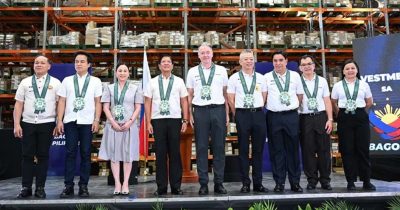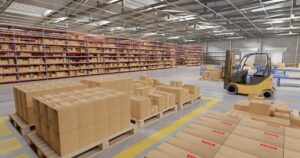Logistic giant Maersk is stepping things up in the Philippines. It has unveiled Maersk Optimus Distribution Center, which is now the company’s flagship warehouse in that country.
The facility spans a massive 10-hectares in Calamba, Laguna. The president of the Philippines Ferdinand Marcos Jr. attended the inauguration of the new Maersk addition. “With the grand opening of the Maersk Optimus Distribution Center, our logistics system will be a step closer to become a powerful force,” says Marcos.
Key features of Maersk’s new facility
The center, which has been dubbed “Optimus” is the country’s largest distribution center and will serve as a transport hub for southern Luzon. The new addition will serve industries such as consumer goods, food and beverage, leisure/lifestyle, healthcare, technology, automotive, and retail.
Here’s the capabilities the facility brings to the logistics operations:
- Storage: 76,000-pallet storage capacity.
- Fleet management: Its 75-dock spread is equipped with a fleet operational control center (FOCC),
- Environmentally conscious: The facility is aiming to achieve a LEED-certified (Leadership in Energy and Environmental Design) distribution center
- Technology: The facility will use technologies that improve energy efficiency, water conservation, and waste reduction.
SP Tan, head of Maersk contract logistics in Philippines says: “Maersk Optimus’ strategic location, outfitted with leading-edge technology, enhances supply chain planning and efficiency, benefiting our customers as they bring their goods to local consumers.”
Philippines freight and logistics market
Mordor Intelligence reports the Philippines freight and logistics market is estimated to grow at an annual compound growth rate of 7.08% in the next four years. Companies could look to a digital shift to spearhead growth.
“The digital shift has been led by e-commerce firms like Lazada, Zalora, and Shopee, who work with tech-driven logistics firms like Ninja Van and Lalamove to transport items so customers can track their orders in real-time. Switching to digital will increase order status transparency, reduce lead times, and speed up customs clearance processes by up to 80%, taking only 3-5 business days,” reads the report.
Photo Credit: Maersk
About the author
Sharl is a qualified journalist. He has over 10 years’ experience in the media industry, including positions as an editor of a magazine and Business Editor of a daily newspaper. Sharl also has experience in logistics specifically operations, where he worked with global food aid organisations distributing food into Africa. Sharl enjoys writing business stories and human interest pieces.












